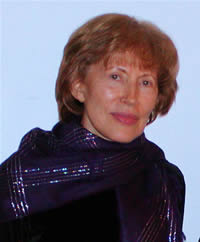Duke Performances and the American Dance Festival have teamed up to bring something very special to Page Auditorium. Even for these presenters, for whom staging the extraordinary is an everyday thing, the double bill of tap dancer Savion Glover with the great drummer Jack DeJohnette is an unusually thrilling accomplishment. The program will repeat June 21.
Everyone’s heard of Glover, a tap dancing wunderkind who grew up to become the most soulful tap dancer of all time (which is saying a lot, given the greatness of the hoofers who came before him) and who has staged great spectacles of the art, as well as performing solo. Now in his early 40s, Glover seems to be going deep into the pure essence of tap – pure rhythm, stripped of the showy cavorting. Even his delicious spins are few, only spiraling out when more energy builds than he can release with his feet.
DeJohnette is well known to jazz aficionados, and many consider him the greatest drummer of the 20th century, and now the 21st. I first encountered his music on Miles Davis’ Bitches Brew, for which he laid down what Miles called “a deep groove.” DeJohnette has only gotten more subtle, more nuanced, more… .percussive over the ensuing years. He braids thick undulating ropes of rhythmic textures – you can almost see the sound waves – that pull the listener out into cosmic space. Only the very greatest drummers can do this, affect your body to the extent that the mind opens fully to the knowledge of time, to the unbounded flow indicated with pulsing sound. We call time the fourth dimension, but really it should be the first.
The evening opened with a solo by Glover, tapping on a small, amplified platform. (He later adjusted the sound mixer for some rich effects, including reverb.) He didn’t need much space – he didn’t travel, rarely spun and he used his arms mainly to gather and hold the rhythms to himself. Yet you couldn’t take your eyes off of him. The wealth of sounds he generated with his feet, and the multiple complex rhythmic lines he built and twined in ever-shifting tempi, the concentrated expression on his face, the straightness of his spine and the perfection of his balance, all combined into a bewitchment.
Glover’s solo was longer than many entire “evening-length” dances – then he was joined by fellow tapper Marshall Davis, Jr. As Davis merged into the music lane, Glover soon exited. However, almost as impressive as Glover’s footwork was his utter stillness as he watched from behind the platform. Davis is a very good dancer, but seeing him immediately following Glover’s inspired work demonstrated the difference between very good and truly great as much as anything could.
After intermission DeJohnette played a three-piece set with pianist George Colligan and bassist Jerome Harris. DeJohnette has a quite elaborate drum kit, and it was bristling with microphones, so the sound of each component was marvelously distinct. The group played an intriguing, high-intensity piece by Colligan, with him on keyboards (2 electronic, one Steinway), then switched places, with DeJohnette playing a composition of his own on piano and Colligan taking the drums (another example of really good being not actually great). Colligan was much more powerful on the keyboards and his tiny trumpet, featured in the third piece. Jerome Harris’ extremely elegant electric bass work stood out particularly in the final piece, during which he augmented the bass line with some otherworldly mouth music.
After a pause came the moment we’d all been waiting for: Glover and DeJohnette eye-to-eye and rhythm-to-rhythm. The two great artists, both long since masters of their crafts, delved deep and went wide together, improvising in a known structure. It was transporting. Meditative. Heart-regulating. Body-moving. Mind-freeing. The artists stayed in their locations, but the music felt like Sufi whirling. Twelve hours later, every cell in my body still sizzles with the energy.
At some point after I’d been freed from the quotidian by rhythm in motion, the other musicians joined in, adding to the volume and complexity, and Davis rejoined Glover on the platform. The question in a piece that takes you from crescendo to crescendo is – how does it end? This feat of aesthetic magic and physical stamina ended simply, with a calm aural period to its long convoluted sentence. It did not just stop; it came to a considered end, all the lines taken to a common destination – complete. The players came back from their journey, seeming a little surprised by the intensity of the audience response.
The program repeats tonight. See our sidebar for details. Be aware that the performance on the 20th – between advertised start time and leaving the theater – ran more like 3 hours than 90 minutes, what with late starting, long intermission and lengthy helpings of the art. If you are interested in tapping and/or drumming, the repeat is most highly recommended.











